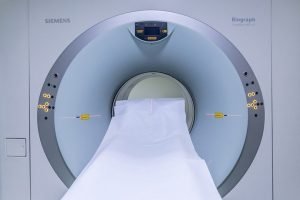Gastric bypass is a type of surgery that helps individuals to lose weight. It changes how small intestine and stomach deal with food. The stomach will be small after the surgery. You will get satisfied after eating less food. The food will not be absorbed in the small intestine and stomach. This is because the body will not get all calories from food. However, gastric bypass has its limitations. Here are the pros and cons of the surgery.
Pros
1. Aid weight loss. Gastric bypass help to promote weight loss. It restricts the amount of food taken. Your stomach and small intestines will take fewer calories and nutrients from food. In addition to that, it affects levels of a hormone that are responsible for hunger and satisfaction. It will change the response of the brain towards eating. For this reason, patients will feel satisfied hence will not feel like eating.
2. Lower cravings. The surgery reduces the cravings of an unhealthy diet. It lowers feelings of hunger as well as the preferences of other foods.
3. Prevent diabetes. Gastric bypass lowers cravings of calories and sugar. For this reason, it prevents type 2 diabetes in almost 90% of cases.
4. Lower blood pressure. High blood pressure is a condition related to obesity. After weight loss surgery, most obese patients experience changes in blood pressure. Therefore, they live longer compared to those who have not undergone surgery.
5. Healthy consumption of food. Gastric bypass helps the body to consume healthy food. You will have discomfort after eating food rich in high fats, carbs, and sugars.
Cons
1. Hormonal changes. Gastric bypass comes with a hormonal gastric bypass. Patients claim that after the surgery, they find previous food tasting bitter or having a bad smell. Therefore, you should know the foods your body tolerates.
2. Dumping syndrome. Dumping syndrome makes patients go through fast gastric emptying. The condition results in the travel of food to small bowel fast especially after eating high carbs. It causes symptoms such as sweating, vomiting, nausea, confusion, diarrhea, abdominal cramps, and mood changes.
3. Malnutrition. This occurs when the body does not receive enough nutrients. It is hard to continue eating when you already feel satisfied. The effects of malnutrition include reduced mass of tissue and muscle. Also, you experience decreased stamina and mobility due to muscle wasting.
4. Gallstones. You start to experience pain in the middle or upper right side of the abdomen. This pain can become sharp or dull. In addition to that, the pain will occur after meals. Gallstones are common in elderly people who are over 60 years. Henceforth, a person has to undergo gallbladder removal.
5. Sagging skin. After the surgery, the skin becomes elastic hence it droops. It can be intense for those who have shed a lot of weight. Therefore, you will need cosmetic procedures in order to remove the sagging skin.
6. Bleeding ulcer. Ulcers can start to bleed with your consent. Symptoms of signs of mild bleeding ulcers include fatigue, pale skin, and lack of energy and shortage of breath. Moreover, severe bleeding ulcers cause sticky stool, dark-colored blood as well as bloody vomit. Fast bleeding due to ulcers can become a life-threatening issue if you do not seek medical attention.



